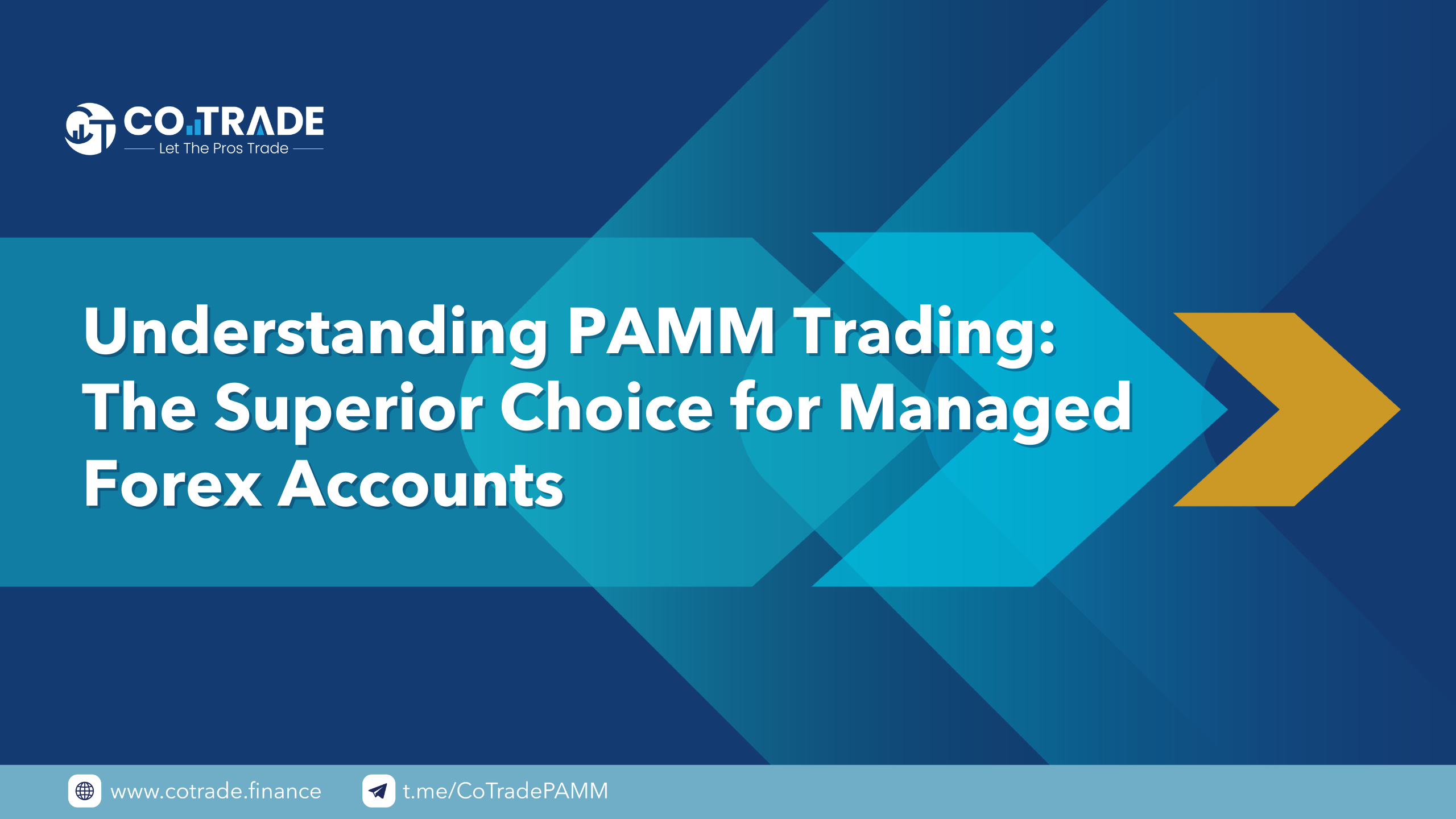Table of Contents
In the fast-paced world of forex trading, the myriad of options available to both new and seasoned traders can be overwhelming. Among the choices, PAMM trading has emerged as a superior choice for those seeking managed forex accounts. In this blog, we’ll delve into the intricacies of PAMM trading, how it compares to other forms of managed accounts like copy trading, and why it might be the right choice for you.
What is PAMM Trading?
PAMM stands for Percent Allocation Management Module. It’s a form of managed forex trading where investors allocate their funds to a professional trader (also known as the PAMM manager), who then trades on their behalf. The profits and losses are distributed among the investors based on the percentage of their investment in the PAMM account.
Want to know how Cotrade’s PAMM service works? Read more here.
How Does PAMM Trading Work?
- Selection of a PAMM Manager: Investors choose a PAMM manager based on their trading performance, risk management skills, and overall strategy.
- Fund Allocation: Investors allocate a portion of their capital to the PAMM account. This allocation can be adjusted over time based on the investor’s preference and the performance of the PAMM manager.
- Trading and Profit Distribution: The PAMM manager trades the pooled funds, and any profits or losses are distributed among investors according to their respective shares in the account.
Why Choose PAMM Trading?
Professional Management
One of the biggest advantages of PAMM trading is professional management. PAMM managers are experienced traders who use their expertise to maximize returns while managing risks. For investors who lack the time or knowledge to trade forex themselves, PAMM trading offers a hands-off approach where their funds are managed by professionals.
Transparency and Performance Tracking
PAMM accounts are known for their transparency. Investors can track the performance of their investments in real-time. This level of transparency allows investors to make informed decisions about continuing or adjusting their investments based on the performance of the PAMM manager.
Diversification
Investors can allocate their funds to multiple PAMM accounts, managed by different traders. This diversification helps in spreading risk and potentially enhancing returns, as not all funds are tied to the performance of a single trader.
PAMM Trading vs. Copy Trading
While both PAMM trading and copy trading involve following the trades of professional traders, there are significant differences between the two.
Control and Flexibility
In copy trading, investors replicate the trades of chosen traders in their accounts. This offers more control and flexibility as investors can decide which trades to copy and can stop copying a trader at any time. However, it requires a more hands-on approach compared to PAMM trading.
Risk Management
PAMM trading often involves more sophisticated risk management as the PAMM manager has control over the entire pool of funds and can implement strategies accordingly. In contrast, copy trading can sometimes result in higher risks if the copied trader takes risky positions.
Fee Structure
The fee structure in PAMM trading is typically performance-based, meaning the PAMM manager earns a percentage of the profits they generate for investors. In copy trading, fees can vary and might include spreads, commissions, or other costs associated with each trade copied.
Conclusion
PAMM trading stands out as a superior choice for managed forex accounts due to its professional management, transparency, and potential for diversification. While copy trading offers more control and flexibility, PAMM trading provides a more hands-off approach with sophisticated risk management, making it an attractive option for investors looking to benefit from the expertise of seasoned traders.
Whether you are a novice trader looking to enter the forex market or an experienced investor seeking to diversify your portfolio, understanding the benefits and workings of PAMM trading can help you make informed decisions and potentially enhance your returns. As with any investment, it’s crucial to conduct thorough research and consider your risk tolerance before diving in.



